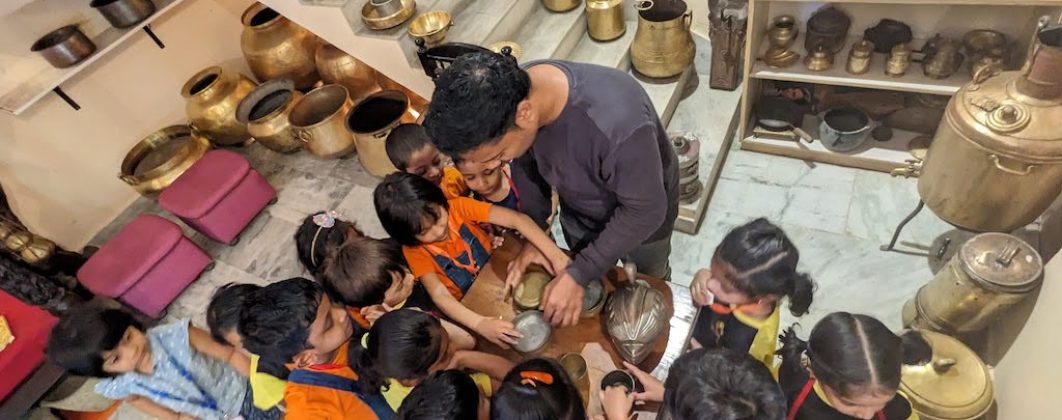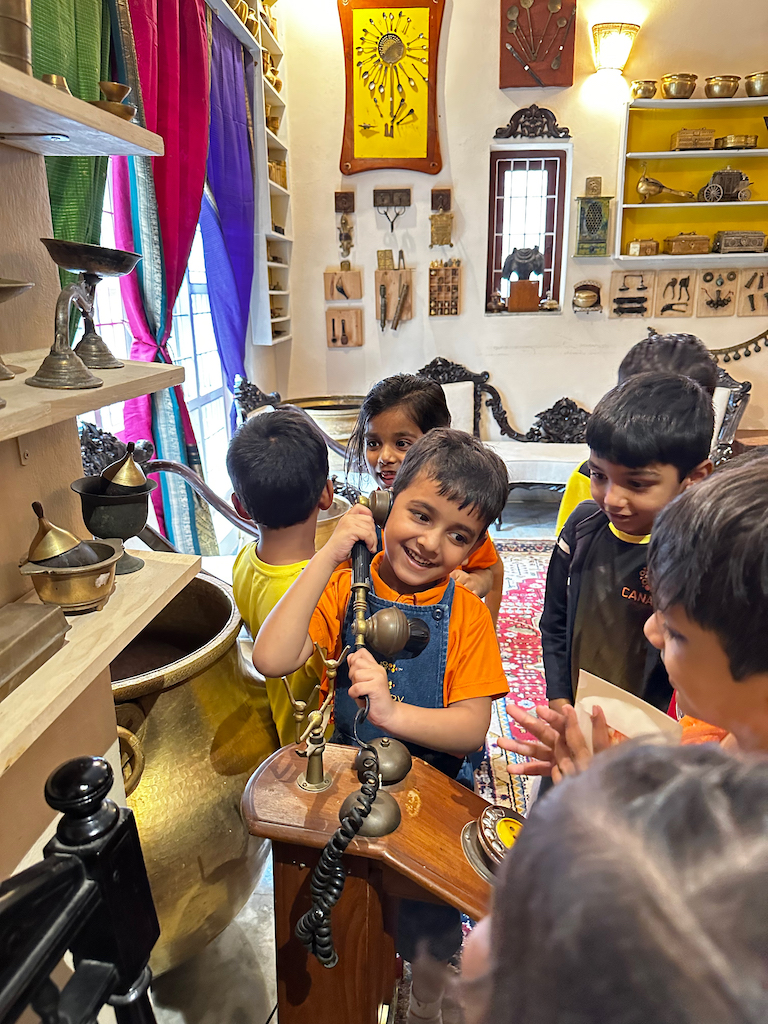
Introducing children to antiques, history, and museum visits at an early stage nurtures their natural curiosity – Article by Jennie Kakkad Jobanputra
In the hustle and bustle of our modern world saturated with technological advancements and fast-paced living, the past conceals. No time for memories, no time for family, no time for antiques. But don’t you think these are an important part of our lives, adding unique and enriching experiences to life? Memories and family, you must be agreeing to but wondering why antiques?
Pause for a while, take a deep breath, and go back to the weathered pages of ancient manuscripts, the graceful curves of vintage furniture, delicate carvings of age-old artifacts, and the haunting melodies of antique musical instruments. That’s when you’ll realize that each piece is a silent witness to the passage of time. If you try to connect with those pieces, each has a unique story to narrate, a lesson to learn, and a connection to linger on all through your life. To mention in simpler words,
“Antiques are not mere objects, but portals to our collective past, offering invaluable lessons for our present and future“.

Invaluable Lessons for the Present and Future
“Through the lens of antiques, we gain not only a glimpse into history, but a profound understanding of the resilience, ingenuity, and interconnectedness of human experience.”
The invaluable lessons that resonate with our past and future are timeless treasures that must be discovered and embraced for a more enlightened and empowered tomorrow. But who defines the present and future? Undoubtedly, the young leaners of the modern world shape societies, economies, and cultures through their actions, beliefs, and contributions. Hence, it all begins with educating them as they are all set to transform the present and build a trajectory for the future. They can be the youth, toddlers, children, and students who hold the capacity to redefine a collective tomorrow. And the best way to do so is by using antiques as educational catalysts.
Transcending textbooks and classrooms, antiques provide immersive experiences that foster critical thinking, stimulate curiosity, foster a connection to the past, and encourage a sense of cultural identity. It’s like giving these young minds a window to bygone eras, empowering them to shape the future grounded in wisdom, compassion, and resilience.

Let’s embark on the journey of discovering the educational value of antiques:

A Rich Tapestry of Antiques in India
With its diverse history and cultural heritage, India beholds a rich legacy of antiques, offering unparalleled and invaluable educational insights. From the age-old manuscripts and opulent relics of ancient dynasties to the intricately carved sculptures of medieval kingdoms and colonial-era artifacts, each piece encapsulates the essence of India in all its eras. To mention the display of such commendable art forms, the country boaaaral museums and archaeology centers house a wealth of treasures to be discovered.
When cultivating a sense of pride and appreciation for the cultural heritage of India, nothing can be more commanding than organizing museum visits. One such example is the recent success of a group of students’ visit to YK Antiques Home Museum. DRS International School, Hyderabad, organized a field trip to our antique museum for the tiny tots aged between 8 and 10 years. For all the kids in the group of 30, it was an incredible experience, sparking their curious little minds at every step as they walked around the museum.In an era when antiques have their timeless allure, all you need to do is incorporate the learning into the academic curriculum through engaging activities. The outcome is a tangible transformation of the way history is taught, the past is nourished, and the future is shaped. Indeed, as William Faulkner, a celebrated American author, said, “The past is never dead. It’s not even past.”
In an era when antiques have their timeless allure, all you need to do is incorporate the learning into the academic curriculum through engaging activities. The outcome is a tangible transformation of the way history is taught, the past is nourished, and the future is shaped. Indeed, as William Faulkner, a celebrated American author, said, “The past is never dead. It’s not even past.”

Copyright © 2021 YK Antiques Home Museum